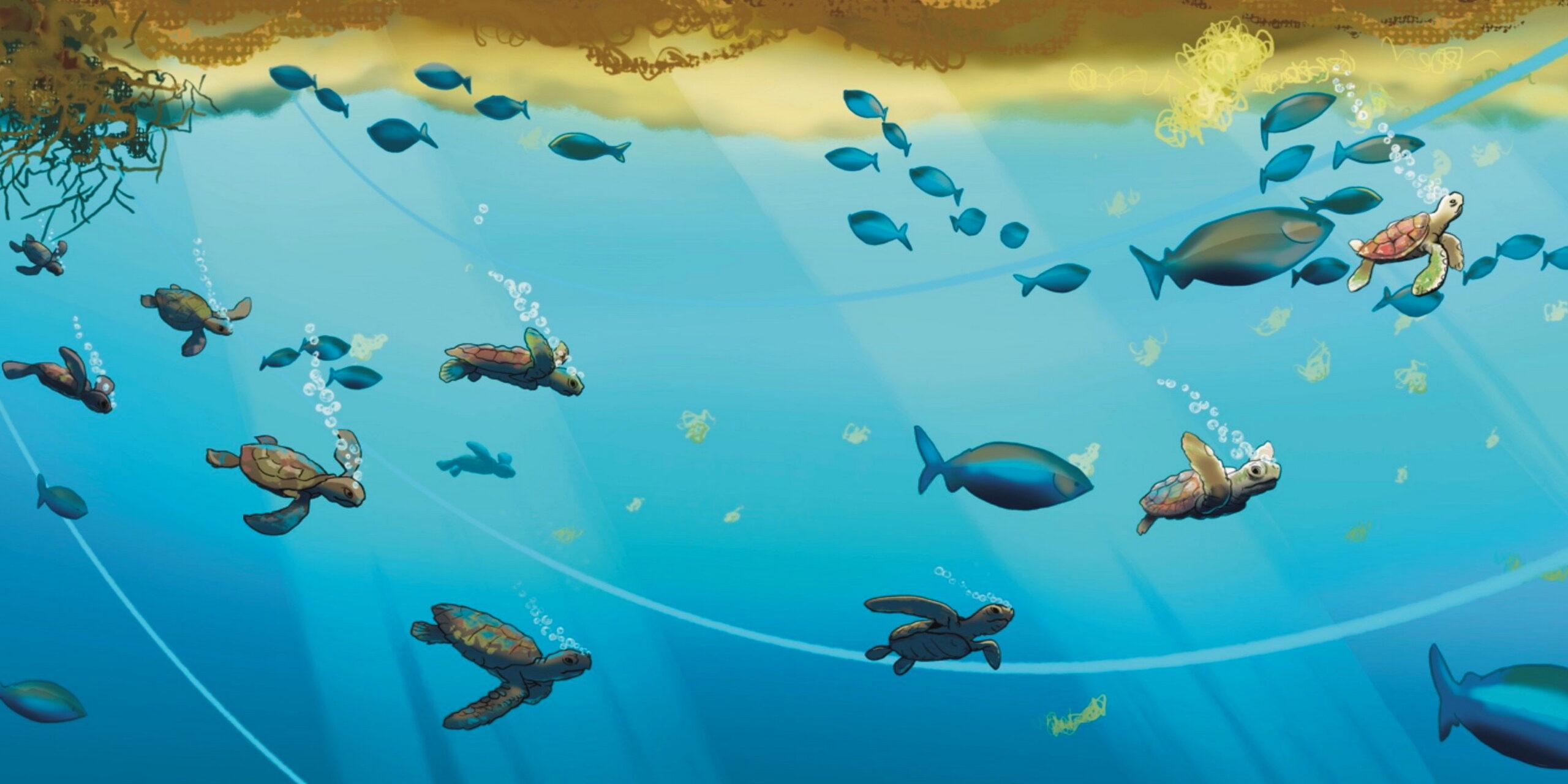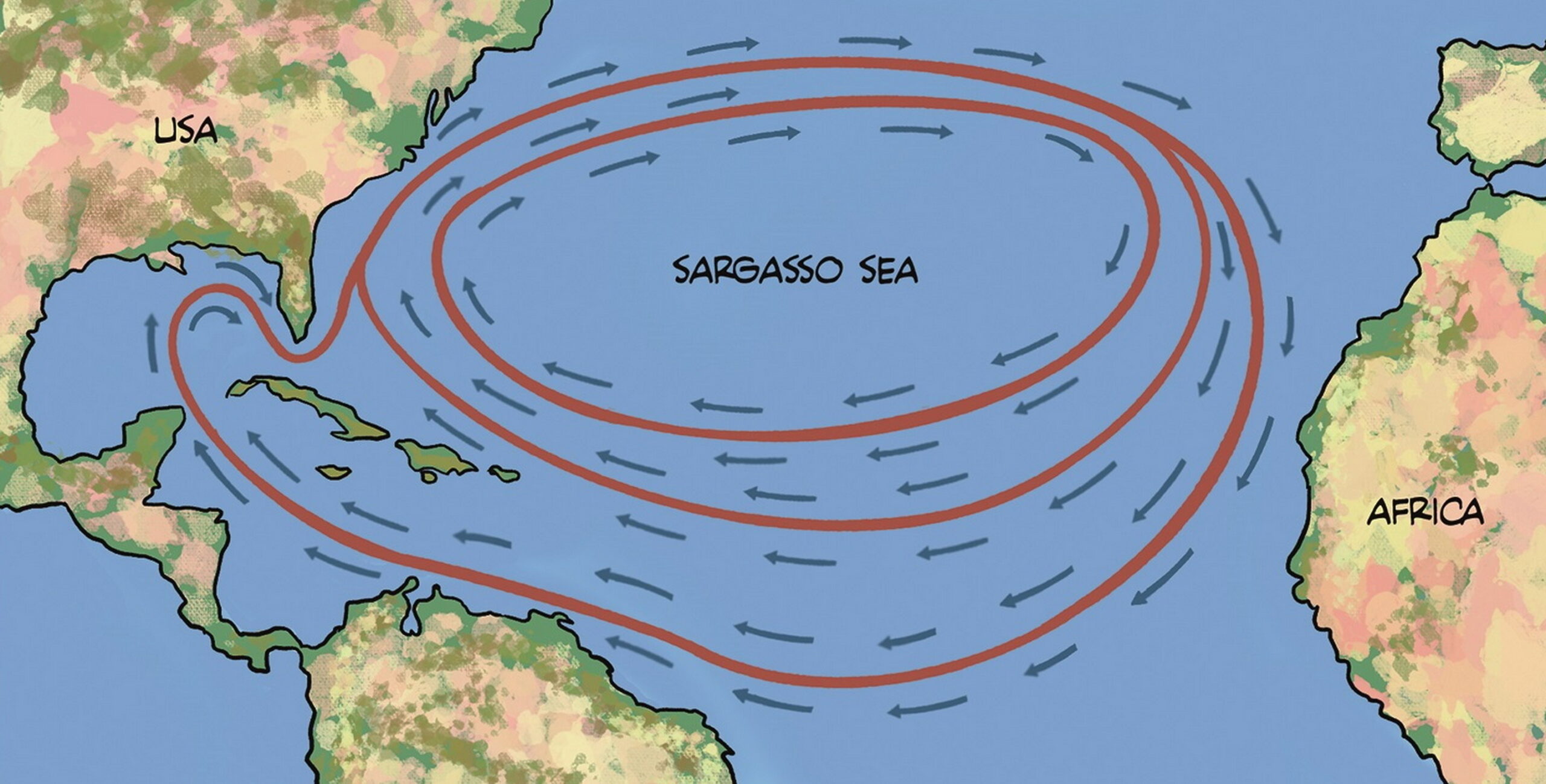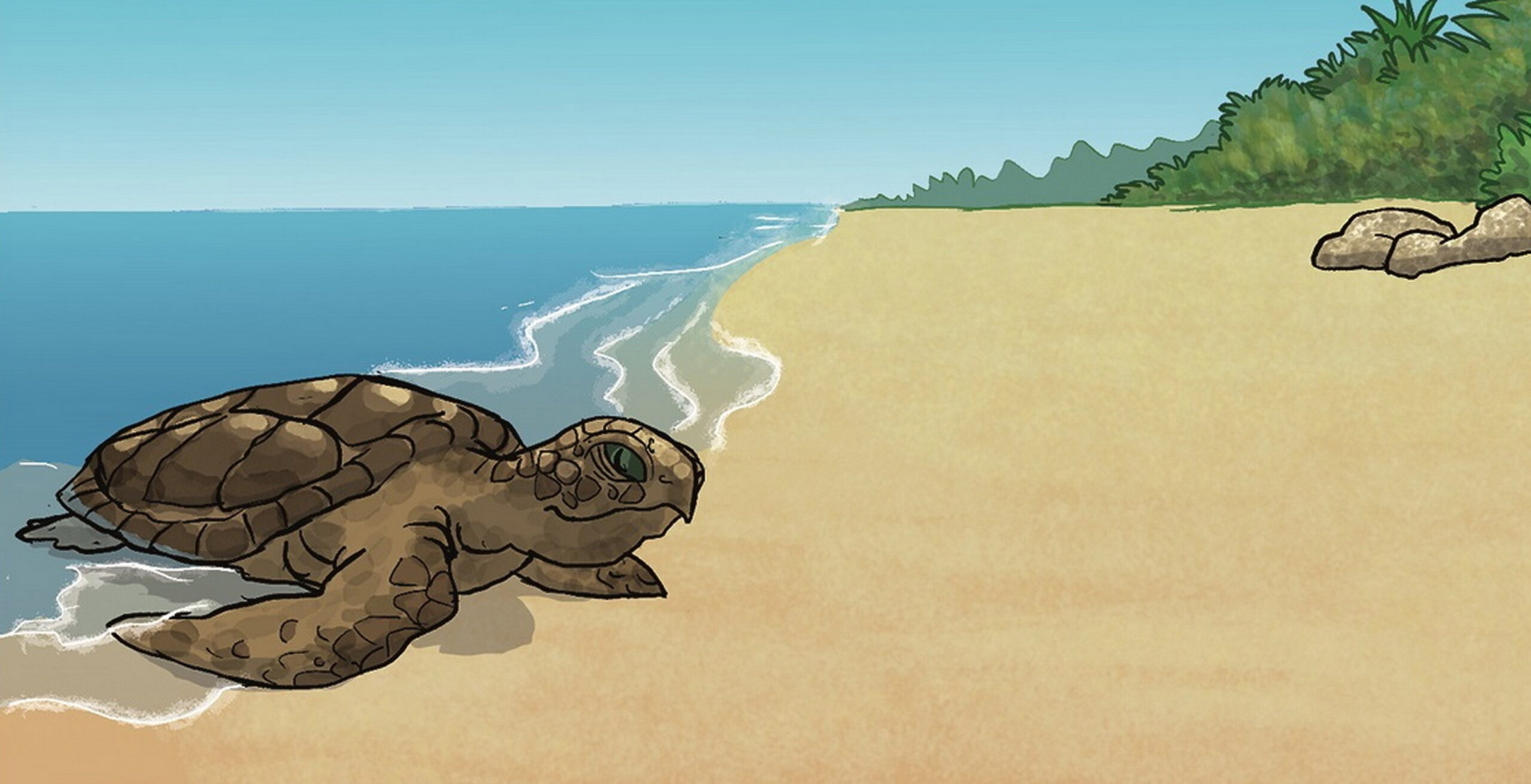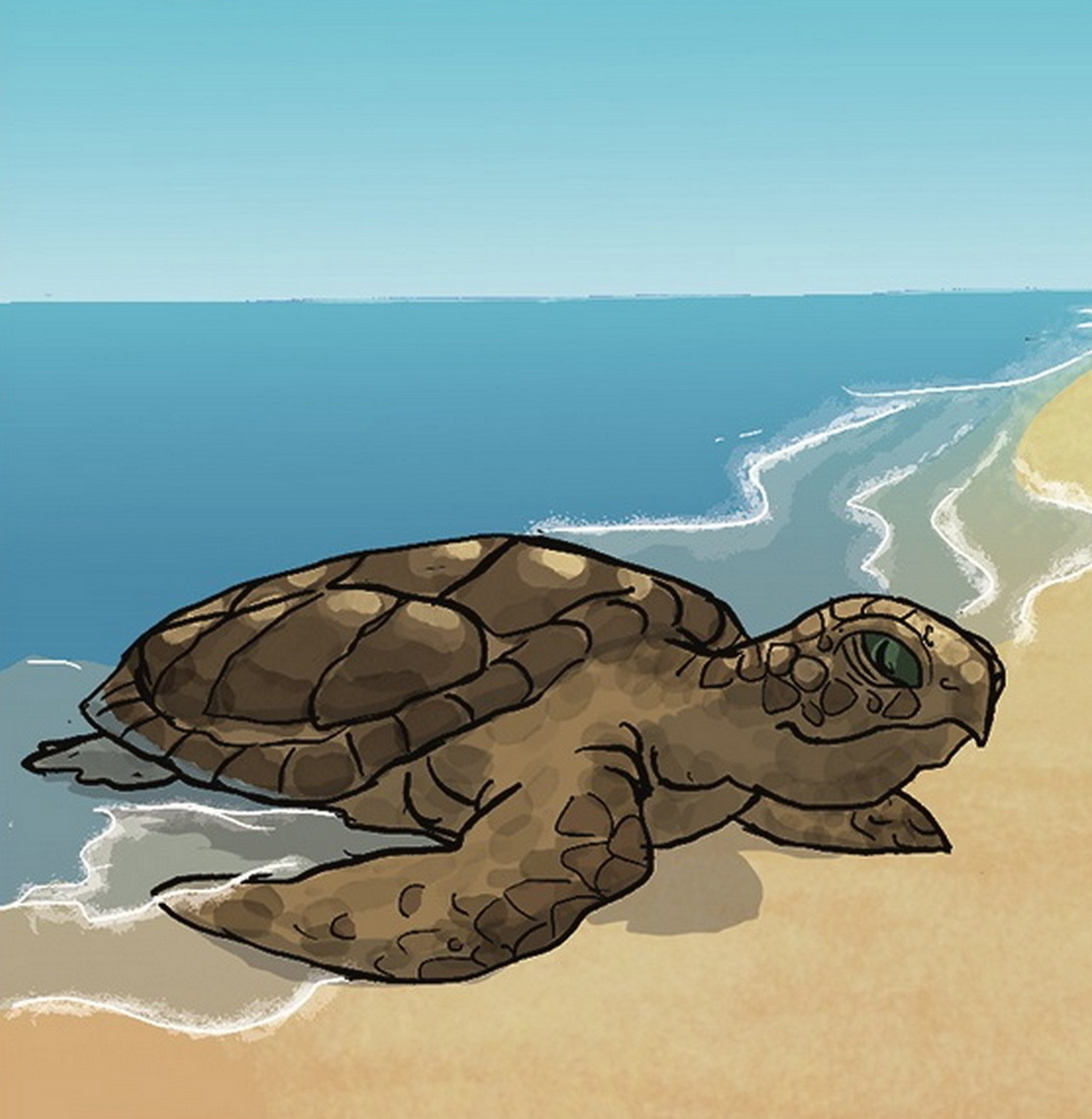Turtles can make a staggering journey from Florida to West Africa and back.
This is the story about how turtles use supersenses on that journey and about
what we can learn from them.
Text © Sander Funneman, Illustrations © Peter Brouwers

We live in uncertain times. An avalanche of changes is tumbling over us. We try to prepare for it as best we can by getting all these changes under control and taking tough measures. In this way, we try to control the flow of change and mitigate its symptoms. But sometimes it can be refreshing to consider how others, not human beings, deal with the changes. Loggerhead sea turtles, for example. They have a remarkable electrically connected life. What could we learn from them?
About the problems that turtles face
Young turtle-hatchlings can make a staggering journey from Florida to West Africa and back. It’s a journey of thousands of miles with numerous dangers that takes them 5 to 10 years to complete. On route around the Sargasso sea they skilfully navigate to avoid many threats. On the beach, eggs are often predated by raccoons, coyotes, skunks and especially ghost crabs. Once hatched, laughing gulls in diving flights pick up the young turtles from the beach. As adults, they are hunted by tiger sharks. Storms and natural coastal erosion pose another threat to the turtles. And rising temperatures can upset the male-female ratio in the nest. The sex of sea turtles depends on temperature – hot for the chicks, coolness for the dudes. So if the nest gets too warm, it will produce mostly female turtles. And of course the turtles also face several human threats like plastic pollution, boat propellers, fishing practices, beach lights, etc.

A secret way turtles use to deal with problems
One of the most amazing things about the way turtles make their great journey is that they do it all by themselves; young turtles do not follow older turtles. But, that does not mean they are all alone. On every metre of the huge journey, they get help from an unexpected source; very practical and tangible help. Travelling over vast intercontinental distances requires extremely precise navigation, as the turtles have to return to exactly the same nesting sites. How do they do that? The answer is simple, profound and enigmatic. The turtles rely on a combination of natural in-built instruments for positioning and orientation. In other words, they tune in to the earth’s magnetic field. That is their secret. And that is also how they deal with most of their problems. If a laughing gull attacks them on the beach they don’t stop their journey. They don’t target the gull. If they survive, they immediately reconnect with the earth’s magnetic field and move on. Or if a shark attacks them somewhere at sea, they don’t turn on the shark to seek revenge. There is no time to waste. The earth’s magnetic field remains the focus.
The way people solve problems
Humans approach problems differently. We do not consult about the timings and directions of our activities with a higher planetary intelligence. That is too vague for most. We tackle problems ourselves. We consult with each other and fight conflicts with compromise or force if necessary. For instance, we fight food scarcity with all kinds of chemical tools and with monocultures that in turn threaten biodiversity. We curb lack of security through more repression and stricter punishment, which actually escalates the underlying problems and reduces security. But by focusing on the problems, we often seem to become part of them. We fill ourselves with it. That is why the solutions sometimes turn out to be worse than the problems. Sea turtles don’t do that. No matter what, they continue to focus on the intelligence of the Earth’s magnetic field. They don’t stop to focus on plastic pollution, ship propellers or blinding beach lights. They keep moving and struggling to stay connected.
How does the GPS of turtles work?
Although the precise mechanisms underlying magnetic navigation in loggerhead sea turtles are still unknown, researchers discovered already several aspects of them. One of them starts immediately after birth. Turtle hatchlings are then using geomagnetic imprinting; they imprint the features of the magnetic field of the beach where they are born, which helps them to return to that beach, many years later. Another mechanism is the use of magnetite in their bodies. Magnetite is a magnetic mineral that acts as a sensor, allowing the turtles to perceive and interpret magnetic signals from the Earth’s magnetic field. A third navigational aspect of the turtles are the magnetoreceptors in their eyes. The turtles can see the Earth’s magnetic field as they move, allowing them to maintain the correct course and perceive the inclination of the Earth’s magnetic field.
So the animals surrender, in multiple ways, to the field’s instructions. The intelligence from the field tells them where to go. They don’t even have to think about it. And by staying so unwaveringly focused on where they are going and by not get lost in the many obstacles along the way, they keep, as a by-product of that attitude, the oceans and beaches in a pristine state.
No turtle has ever stopped along the way to create weapons that could settle for once and for all the attacks of sharks, laughing gulls or.., humans. For thousands of years, animals have followed the intelligence of Earth’s magnetic field, each in their own unique way. And for thousands of years, the planet has been informing each new turtle about the first principle of turtle life: trust the connection. Incidentally, the planet does the same with bacteria, ants, bees, butterflies, fruit flies, homing pigeons, geese, arctic foxes, cows and lots of other animals. All rely on the connection.

Can humans do what turtles do?
It is hard to describe what the world might look like if people could do in their own way and at their own level what turtles and so many other animals do. What would that connection look like for people? To what could humans connect? For a start, we would focus much more on the future than on the past. And our educational system would specialise in aligning pupils and students to their internal capabilities and technologies. But wait a minute. Do humans have what turtles have? Yes indeed. Humans are able to feel, see, think and even dream with planetary and cosmic influences. For example, there are far more magnetite particles in the human brain than in the brain of a turtle, which makes the human brain very sensitive to changes in the earth’s magnetic field. And humans also have the ability to see the field with light-sensitive proteins in their eyes, just like the turtles. Then consider that the earth has an electric pulse in the same range as the human brain, the heart and other systems. So no excuses in terms of equipment!
Just as new technology is invented externally, it might also be possible, with practice and training, to reactivate all these amazing internal capabilities. What might that lead to? What would the Earth’s magnetic field have to say to people who connect to it? What would we do? And what would a connected culture look like in which each person would be able to succeed in making their own epic inner journey? Such changes seem far away and out of reach. But essentially they are very close and right there at everyone’s fingertips.
This article was originally published in Dutch, in Optimist Magazine, nr. 213, November/December 2023


